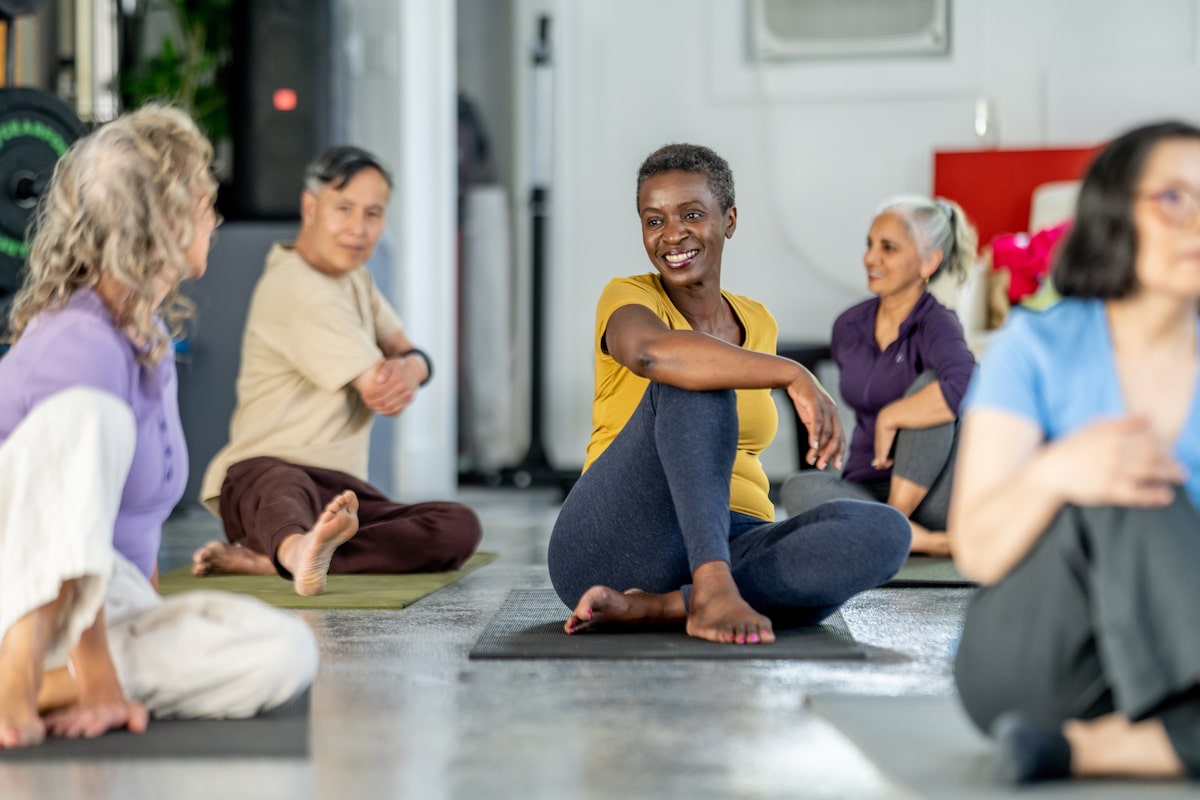Research shows that physical activity isn’t just about adding years to your life, it’s about adding life to your years.GETTY IMAGES
Moshe Schwartz is always thrilled when he can improve the lives of his retired clients. As owner and senior trainer at Gentle Motion, a Toronto-based provider of in-home personal trainers for seniors, Schwartz has seen success stories big and small.
When he first met his client Gisèle, for example, she was in chronic pain and had left her job as a nurse because of fibromyalgia, a debilitating disorder that causes widespread musculoskeletal pain. Schwartz worked with her for several years after her diagnosis, and over time her strength started to improve and the pain got a little better.
“As of a couple years ago, she considered herself to be in remission from fibromyalgia, which is a huge accomplishment,” says Schwartz.
He also worked with a recreational golfer who was experiencing physical challenges as his body aged. “We would work on mobilizing his hips, his ankles, strengthening his core, and he told us a few months after we started with him that he had his best golf round ever.”
Stories like that highlight what research now confirms, that physical activity isn’t just about adding years to your life, it’s about adding life to your years, particularly in retirement.
“Our bodies are like a car,” Schwartz says. “If it’s sitting in your driveway and you’re not using it, it’s going to rust up. If something happens, you need to get it fixed.”
In other words, ignoring physical fitness in midlife can result in medical interventions, early retirement and assisted living needs later. Exercise is an investment in longevity and a way to improve your chances of doing the things you love for a long time.
‘The more you do it, the better’
Stuart Phillips, kinesiology professor at McMaster University in Hamilton, Ont., says that for older adults, exercise preserves muscle mass, supports bone health, improves glucose control and reduces frailty. “These changes translate directly into better day-to-day function and a greater ability to live independently.”
Maintaining muscle as we age is essential for independence because it underpins every functional task, from getting up from a chair, climbing stairs, to carrying groceries, he explains. Physical activity reduces the risk of chronic diseases such as type 2 diabetes, cardiovascular disease and some cancers, while also improving balance, reaction time and neuromuscular control which can reduce the risk of falls and related injuries.
Staying physically active also delays or prevents functional decline that often affects older adults transitioning into assisted living or long-term care facilities, Phillips says.
“Stronger muscle means greater confidence and a much lower risk of losing autonomy,” he says. “Exercise is one of the most effective ‘health span-extending’ tools we have.”
But perhaps more surprising, says Mabel Ho, postdoctoral fellow at the Bruyère Health Research Institute in Ottawa and lead author of the study, is that these improvements weren’t just about genetics or luck, but behaviours that older adults could adopt at any stage of life.
Exercise, Ho explains, is linked to better mood, better quality sleep, lower smoking rates, increased social participation and, ultimately, more independence. “The more you do it, the better,” she says, noting that staying active helps older adults be able to care for themselves, reducing reliance on medical care and assisted living as they age.
Exercising with a friend or loved one can boost social networks and help keep fitness routines on track.GETTY IMAGES
Start small, build a routine
Staying active doesn’t have to involve great exertion and a gym membership, says Esme Fuller-Thomson, director of the Institute for Life Course and Aging at University of Toronto.
“Simple exercises such as walking and gardening can improve mood, decrease depression and help maintain physical strength, mobility and independence, even in the presence of chronic physical health conditions,” says Fuller-Thomson, co-author of the PLOS One study.
Also, because exercise can often be a social activity, like going to the park with a friend, gardening with a spouse or attending a Pilates class, it combats social isolation and builds support networks that enhance well-being.
All the experts suggest consulting health care professionals before starting new routines. For anyone intimidated by starting a new physical activity or fitness routine, Schwartz says it’s okay to start small.
He encourages his clients to begin with familiar movements that line up with their goals, like getting up from a chair five times in a row, rather than ambitious gym routines.
“The most important exercise is the one that’s going to get you going,” he says. “Once you’ve established that as a bit of a routine, [you] want to focus on movements that are going to help you get through the day a little bit easier.”
Fuller-Thomson suggests choosing a form of exercise you enjoy and starting with just 15 minutes of activity. Having a friend to exercise with, like a walking buddy, can keep you on track, she adds.
Phillips notes that the key is consistency, not perfection. “It is never too late to begin, and the benefits start accumulating almost immediately.”
